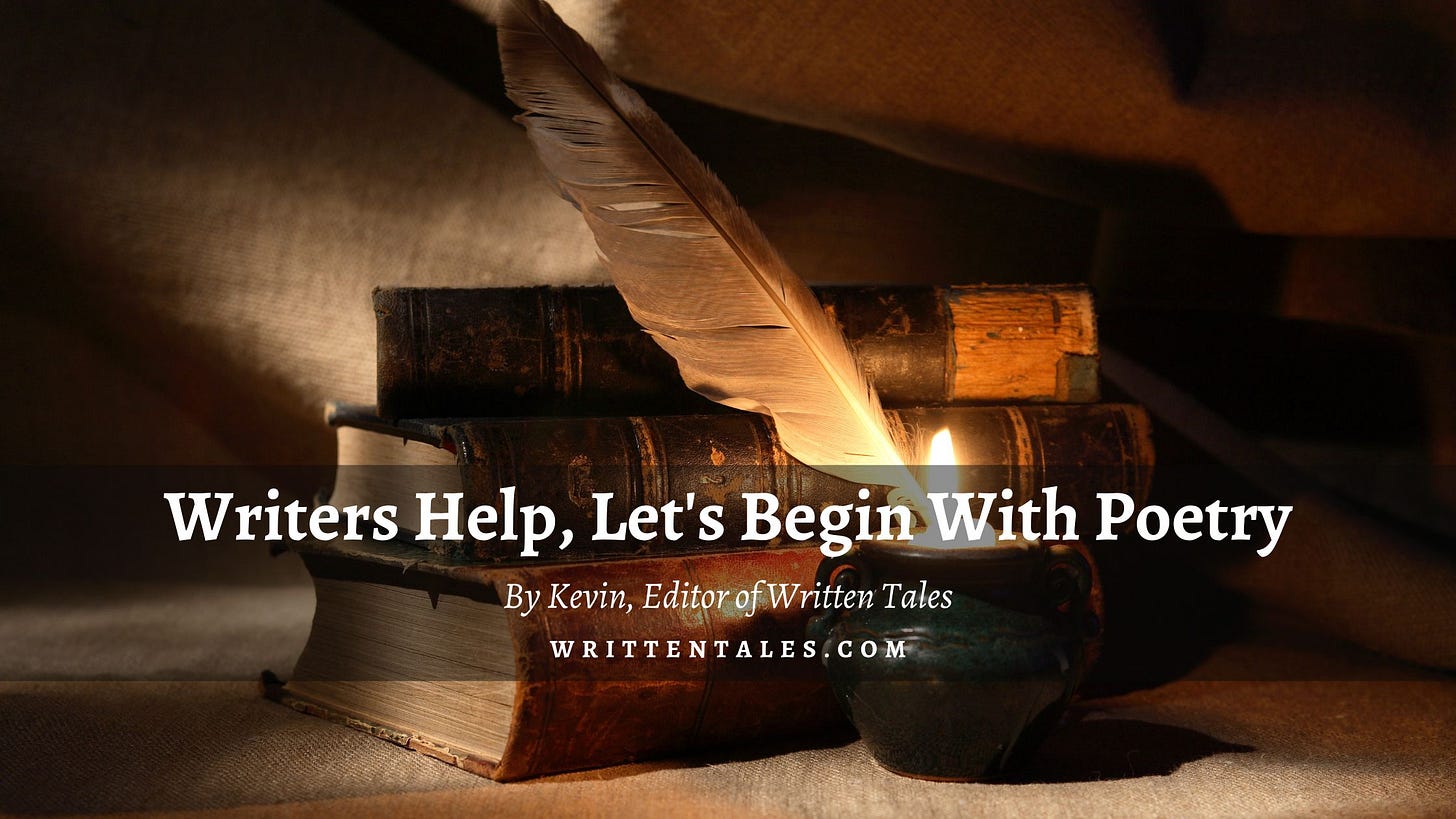Throughout the week, I'm blessed to read many submissions from writers around the world. And I enjoy each one. But, one issue I see too often, they're still in draft form. This includes both poetry and short stories. The root cause seems to stem from a lack of exposure to different genres. Therefore, the authors only produce what's in their comfort zone and they don't push their creative edge.
In the poetry category, too many use free-verse as a crutch. They believe it's a free for all where anything goes. That's a fatal misconception. Even within the free-form style, rules exist, which most are unaware.
To help challenge writers in their creative process, I'm might create a series of these types of articles. But, I need your feedback if it's something you'd like offered by Written Tales.
To begin, we'll start with different poetry forms. The forms help
increase vocabulary,
get the thought process flowing,
work with meter and prose,
and most important, help you become a better all around writer for readers to enjoy.
Why start with poetry?
It embraces the mind to think through metaphors instead of telling the reader. You'll show readers and not tell them verbatim. You'll use comparison to create an image in the reader’s mind. It'll force the use of a thesaurus. A critical tool in all written forms. Last, the syllable count. This alone makes writing poetry not only challenging, but fun.
Cinquain Poem
We'll kick the series off with the cinquain poem created by Adelaide Crapsey. She lived from 1878 to 1914 and enjoyed the Japanese tanka and haiku forms. They offered beautiful imagery in short, bite size prose. And from these styles, her cinquain was born.
But, like all other forms, the Cinquain has rules which help you consider each word with care. Remember, there's only twenty-two syllables across fives lines to complete the prose.
Line 1 consists of two (2) syllables,
line 2 four (4),
line 3 six (6),
line 4 eight (8)
and line 5 two (2).
They can be written with multiple stanzas, chained, or written in reverse (2, 8, 6, 4, 2).
Like the tanka, where the third line becomes the pivot point, the cinquain uses the last line to reiterate the first with a synonym.
a word or phrase that means exactly or nearly the same as another word or phrase in the same language, for example shut is a synonym of close: “the East” was a synonym for the Soviet empire | “shut” is a synonym of “close”.
— American English Dictionary
A good place to begin the adventure is:
Line 1: Noun (2 syllables)
Line 2: Description of noun (4 syllables)
Line 3: Action (6 syllables)
Line 4: Feeling or Effect (8 syllables)
Line 5: Synonym of the initial noun (2 syllables).
Example 1
Image; (noun) Perfect outlines (description) Swirling around my mind. (action) Never again replicated (Effect) Artwork (synonym) by Kev, single stanza
Example 2
Female — (noun) Pretty lady, Smile for me my baby; Harassment on the city streets — Object (synonym, noun) Just eye candy Treated with great disdain; Sexual objects for profits — Enraged (synonym) by Kev, chained cinquain
As you see from the examples, these little poems can cover any topic. But the fun is in the rules. They make you think and pick each word with care.
If you enjoyed this article and would like me to continue this series, let me know. Heck, I might even add a section on the main website to showcase your creations. But again, I need your feedback.
Happy writing!
Kevin




